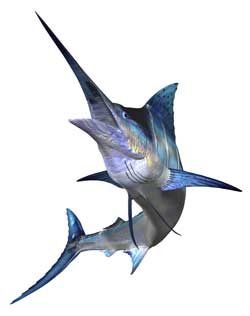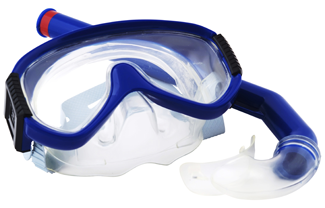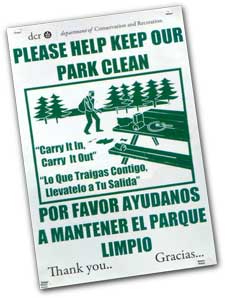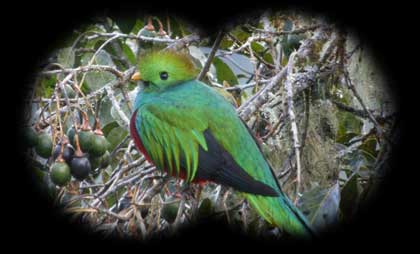For Pleasure
Prepare to fall in love with this place
Costa Rica for pleasure
We don't have to tell you all the reasons that Costa Rica is paradise on Earth, but we just can't help ourselves. No matter what you are looking for in terms of fun and relaxation and natural beauty, you'll find it here.
1. It's a veritable Garden of Eden
Costa Rica is one of the world’s most biologically dense countries and is renown for it's incredible biodiversity. The 500,000 species of plants and animals in Costa Rica represents 4 percent of the total species on Earth, even though Costa Rica is a relatively small country.
2. A fisherman’s paradise
Costa Rica is known for being one of the world’s best locations for deep sea fishing and sport fishing. The waters off of Costa Rica’s Pacific coast are teeming with marlin, sailfish, tuna, and dorado, with plenty of charter boats available. Off the Caribbean coast are tarpon, snook, billfish, wahoo, dorado and mackerel. The lagoons and river mouths along the Caribbean coast are some of the best places for tarpon and snook.3. The climate is wonderful
In short, the weather is always great. December through April is considered the dry season, and the rainy (or green) season starts in May. During the rainy season, from May until November, you can expect afternoon showers in the central valley and the beaches, and heavier downpours in the rainforests. Don’t let the rainy season scare you away, because the rain doesn’t last all day and the mornings are sunny and bright.In the central valley, where San Jose is located, the days are mild and warm and the nights are cool. The beaches heat up during the day. With Costa Rica being so close to the equator, the temperatures don’t vary much from season to season.
4. If you want the Big City, there’s San Jose
Costa Rica is mostly known for its natural beauty, so many are surprised to learn that San Jose is a big, vibrant city offering an abundance of restaurants, night clubs, casinos, sports bars, shopping malls, and a world-class symphony. The two Cecropia development centers are located near San Jose.
5. Beautiful mountains
 There are mountains that rise higher than 10,000 feet, where the weather is always cool and brisk.
There are mountains that rise higher than 10,000 feet, where the weather is always cool and brisk.
6. No wait on the golf course
The golf scene in Costa Rica is growing rapidly, and because golf is not a sport with a huge following among the locals in Costa Rica, golfers here will find beautiful, wide-open courses free of crowds. Usually, tee times are unnecessary, and almost all club pros and caddies are fluent in English.Some of the oldest and best courses are found in the San Jose area. The Cariari, which is near the San Jose Airport, is a beautiful course and very popular with international golf pros. Newer courses include the Parque Valle del Sol in Santa Ana. Some stunning new courses closer to the coasts include Los Sueños, near Jaco, and the 7,500-yard, par 72 Hacienda Pinilla in Guanacaste, not far from the beaches at Tamarindo.
7. Top surfing spots
With more than 750 miles of coastline, warm water, and a consistent surf year round, Costa Rica has become one of the world’s top surfing destinations. You can surf on both the Pacific and Caribbean coasts here, but the Pacific coast is about five times longer and known for premium surfing spots, such as the popular breaks in the northwest province of Guanacaste. There are also excellent spots along the Central Pacific coast at places like Jaco, Quepos and Dominical. Some of the longest waves in the country are down in the Southern Pacific coast on and around the Osa Peninsula at places like Pavones. On the Caribbean coast there are some nice breaks at Playa Bonita, Cahuita, and Puerto Viejo.8. World-famous beaches 
Among its 750 miles of Pacific and Caribbean coastline, Costa Rica boasts some beautiful beaches. National Geographic rated the beaches at Manuel Antonio National Park among the top five in the world. On the Pacific coast, in Guanacaste, the Northwest corner of the country, you’ll find long, pristine beaches that dip into the surf of the Pacific Ocean at places like Santa Rosa National Park, Playa Tamarindo, Playa Samara, Playa Montezuma and Malpais. Along the Central Pacific coast there are popular beaches at Jaco, Playa Hermosa, and Dominical.
The rainforest runs right up to the beach in Manuel Antonio National Park and also in many of the beaches farther down along the Southern Pacific coast, in places like Puerto Jimenez. On these breath-taking beaches, where the jungle ends, you can relax in the sun or in the surf while watching monkeys, toucans, and scarlet macaws romping through the trees.

9. Coral reefs and snorkeling
Costa Rica’s Caribbean coast is rich in coral reefs. Right off the coast at Limon, divers can enjoy the lush reefs teeming with tropical fish or explore the wreck of an old cargo ship, the Fenix. Off the coast at Cahuita is one of the largest reef systems in Costa Rica, spanning well over 1,000 acres. Here there is an abundance of colorful reef fish as well as two sunken ships. In places like Punta Uva and Manzanillo, the white sand beaches and calm turquoise waters lure beach-lovers from all over the world. The water on this coast is perfect for a peaceful swim or for snorkeling among the rich coral reefs offshore.10. Scuba diving
For scuba diving, Costa Rica’s Caribbean coast is the preferred location. Right off the coast at Limon, divers can enjoy the lush reefs teeming with tropical fish or explore the wreck of an old cargo ship, the Fenix. Off the coast at Cahuita is one of the largest reef systems in Costa Rica, spanning well over 1000 acres. Here there is an abundance of colorful reef fish as well as two sunken ships.
While coral reefs are sparse on the Pacific coast, this region is home to many different species of large game fish, small tropical fish, rays, and turtles that live around beautiful rock formations. Grouper, snappers, jacks, and even marlins also can be seen here, as well as large schools of eagle rays and manta rays. The diversity of marine wildlife off the coast in Guanacaste is impressive, and until recently it was rarely explored by divers. This location offers fully stocked dive shops and excellent dive operations.
11. Hiking and rainforests
Hikers love exploring the lush rainforests under the canopies of ancient, tropical hardwoods, and searching for monkeys, iguanas, or any of the 878 species of birds native to Costa Rica. There are at least a dozen climate zones in the country, ranging from hot coastal areas, to the temperate cloud forests, to chilly 12,000-foot altitudes. The variety of climate zones is part of the reason for the incredible amount of biodiversity in Costa Rica.
12. Places to view wildlife
Along the Pacific coast, in parks like Manuel Antonio National Park, you can get a close view of white faced capuchins and squirrel monkeys. At Carara National Park you’ll get to see scarlet macaws, and down the road about a half a mile you can watch the huge crocodiles in the Tarcoles River from the Tarcoles Bridge. At Monteverde you’ll have a chance to encounter the Quetzal, one of the most beautiful birds in the world. Corcovado National Park, in the Osa Peninsula, is one of the largest reserves in the country and its biodiversity is unmatched. No matter which park you choose, you’ll have a chance to see creatures like sloths, toucans, parrots, iguanas, or one of the four species of monkeys native to the country.
At Monteverde you’ll have a chance to encounter the Quetzal, one of the most beautiful birds in the world. Corcovado National Park, in the Osa Peninsula, is one of the largest reserves in the country and its biodiversity is unmatched. No matter which park you choose, you’ll have a chance to see creatures like sloths, toucans, parrots, iguanas, or one of the four species of monkeys native to the country. 13. Spanish immersion programs
Many people come to Costa Rica to learn Spanish in one of several available programs. There are schools that teach all levels of Spanish and there are immersion programs that will match you with a Costa Rican family to allow you to practice Spanish after class. Living in a Costa Rican household while studying Spanish also gives you a chance to learn about the culture and customs.Many people feel that Costa Rica is the best place in Latin America to learn Spanish because the people here tend to speak very clearly. One thing is for sure: Ticos (locals) are always happy to meet people trying to learn to speak Spanish and they are always excited when they’re given the chance to help someone learn their language.
14. Yes, you can drink the water
Unlike in many other Central American countries, clean tap water generally can be found throughout the country and in most tourist destinations. And most visitors can enjoy the local food without issue.15. Safety and crime rate
The crime rate in Costa Rica is one of the lowest among neighboring Latin American countries. One reason: Abject poverty is rare, which helps keep crime relatively low. The crime rate in the US, by comparison, is much higher.
16. No language barrier
English is widely spoken in Costa Rica, and the country boasts an impressive 95 percent literacy rate.17. Currency
U.S. dollars are widely accepted in Costa Rica, and the local food generally is fairly inexpensive (breakfast and lunch typically costs about $3-4).![]()
But how is the business climate?
We could go on and on. But you can't hop on a plane to Costa Rica until you've confirmed that Costa Rica is a good place to do business. Is it a stable government? Do they have great tech talent? How does it compare to working with talent in India or the Ukraine? Great questions. Check out our Costa Rica for Business page.